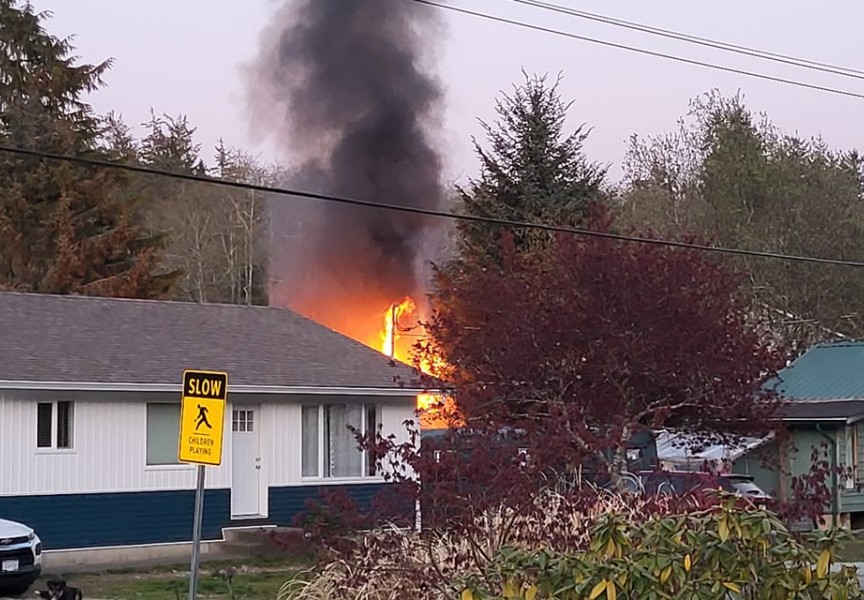A few kilometres from the site where the Alberni Indian Residential School forced Aboriginal children to submit to Christian practices for 82 years, an accusation of indoctrination came from an incident at a school in 2015. But according to a Port Alberni mother, this time her Christian daughter was being forced to participate in an Indigenous practice during a Grade 3 class at John Howitt Elementary.
Considering the historical legacy of the area, the case brought a bitter irony, according to Justice Douglas Thompson, who in his ruling dismissed the petition from Candice Servatius on Jan. 8, calling the mother’s comparison to the residential school system “insensitive and regrettable hyperbole”. Servatius unsuccessfully took the case to the B.C. Supreme Court, alleging that the school had infringed on her children’s right to freedom of religion by forcing participation in a smudging ceremony and witnessing an Indigenous hoop dance at a school assembly, where a prayer was said by the dancer in an Aboriginal language.
After years of working to introduce Aboriginal culture into the curriculum, Alberni School District (SD70) Superintendent Greg Smyth admitted that the trial, which was held in Nanaimo over five days in November, brought concern.
“The outcome of the case, potentially, would have a significant impact on what we did in schools,” he said.
Smyth noted that the school district has given more attention to First Nations content since the B.C. Ministry of Education introduced Shared Learnings in 2006, a guide to help teachers bring Indigenous culture and history into their classrooms.
Over this period results have improved for the district’s Indigenous students, with the high school completion rate increasing from 35 per cent in 2006 to 70 per cent of Aboriginal learners last June. Over the same period of time SD70’s overall completion rate has also improved from 65 to 83 per cent in 2019.
With one third of the Alberni school district’s students identifying Aboriginal ancestry, the shift to incorporate more Indigenous content has also targeted the need to create a learning environment where children and youth feel that they belong.
“With such a large potion of our students self-declaring Indigenous ancestry, it’s important for it to be part of our regular instruction in schools,” said Smyth. “We need to find ways to make all of our students see themselves in our schools.”
But in the case of a smudge practice – which is the cleansing of a space by the burning of sage – and a hoop dance and prayer delivered by visitors to the school, the presentation of this Indigenous content compromised the belief of the Servatius children, according to testimony given by Pastor John Cox. He formerly served in the same Port Alberni church that the plaintiff’s family attends.
“For Mrs. Servatius and her daughter to express agreement with the concepts that ‘everything has a spirit,’ and that our own spirits can be ‘cleansed’ apart from the atoning death of Christ, amounts to a serious denial of the Lordship of Jesus Christ,” wrote Cox in his report for the court. “It is entirely contrary to Protestant Evangelicalism to assert that a human being conducting a ceremony with sage smoke can rid people and objects of impurity or negative energy, or that such a thing should be attempted.”
Smyth stressed that students were not forced to participate in the cleansing or adopt the beliefs that were demonstrated.
“Teaching about something is not the same as teaching to become,” he said.
As noted in Thompson’s decision, public schools in B.C. have the “secular duty of neutrality”, which entails that one cultural belief is not favoured over another. But in Cox’s submission to the court, secularism is what can cause problems for some Christian families.
“With the increasing secularization of western society, Christians are increasingly challenged regarding how to raise their children with a solid grasp of their Christian faith,” he said. “Within Christianity, children are encouraged to think, discuss, and question in order to understand the Christian faith and eventually make it their own. Parents will discuss the merits of Christianity as well as consider why other expressions, including First Nation spirituality, are not consistent with the teachings of Jesus and the Bible.”
A central part of the Nuu-chah-nulth Tribal Council’s argument is that smudging is a cultural practice, not a religious ritual. Servatius’ lawyers argued that the spiritual nature of smudging means it has a religious nature, but in his decision, Thompson declined to make a judgement on this matter.
“We never considered the activities to be religious, nor were we in a position to impose a definition of religion on Indigenous culture and traditions,” added Smyth. “Wouldn’t that be the ultimate colonial act for me to do that?”
As the school district moves on from the smudging trial, Smyth reflected on lessens from the difficult process.
“Going forward, it’s important that we continue to be clear and timely in our communication with parents and to be clear as to the educational intent of something, such as a cleansing, a prayer or any other cultural activity,” he said.







